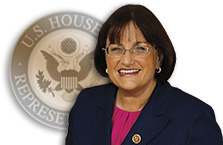Press Releases
Kuster Statement on FDA Improvements to Labeling Regulations
Washington, DC,
October 13, 2016
Today, Congresswoman Annie Kuster (NH-02) welcomed the Food and Drug Administration (FDA’s) decision to improve its labeling regulations, and in a letter to the FDA, called for further improvement to warnings that appear on opioid medications. Earlier this year, Congresswoman Kuster introduced Carl’s Law (H.R. 5601), which would require any medication that contains an opiate to include a warning on its label identifying the presence of opioids and the possibility for drug-seeking behavior. “With the FDA’s decision to inform consumers of the potential dangers of combining medications containing opioids with other drugs, such as benzodiazepines, patients will be equipped with more information to ensure use of prescription opioids will be safe and effective,” Congresswoman Kuster wrote to FDA Commissioner Dr. Robert Califf. “However, I welcome the opportunity to work with the FDA to further improve the warnings that appear on opioid medications. While the combination of opioids with other drugs like benzodiazepines is a significant cause of accidental overdose, it is certainly not the only cause of overdose nor the only danger associated with prescription opioid use.” As the co-chair of the Bipartisan Task Force to Combat the Heroin Epidemic, Kuster has been at the forefront of the fight to address the heroin and opioid crisis at the federal level and in New Hampshire. She has been an outspoken advocate for the need to support medical, law enforcement, treatment, and recovery efforts, and has heard directly from stakeholders across the state. In recognition of her leadership on this issue, Kuster was appointed to the conference committee tasked with producing the final version of the Comprehensive Addiction and Recovery Act (CARA). The full text of the letter is available below: The Honorable Dr. Robert Califf, M.D. Commissioner Food and Drug Administration 10903 New Hampshire Avenue Silver Spring, MD 20993 Dear Commissioner Califf, In light of the startling findings from the Centers for Disease Control and Prevention (CDC) showing accidental overdose as the leading cause of injury-related adult deaths, I welcome the Food and Drug Administration’s August decision to improve its labeling regulations. It’s important that labels communicate the full dangers associated with opioid use. With the FDA’s decision to inform consumers of the potential dangers of combining medications containing opioids with other drugs, such as benzodiazepines, patients will be equipped with more information to ensure use of prescription opioids will be safe and effective. This decision by the FDA acknowledges the importance of providing information to prevent accidental opioid overdoses. However, I would welcome the opportunity to work with you to further improve the warnings that appear on opioid medications. While the combination of opioids with other drugs like benzodiazepines is a significant cause of accidental overdose, it is certainly not the only cause of overdose nor the only danger associated with prescription opioid use. Labels should reflect all information necessary for American consumers to make an informed decision on the use of their prescription drugs. The pain reduction power of opioids comes with drawbacks and dangers that demand stronger warnings to consumers. The case of my constituent Carl Messinger is a troubling and illustrative example for the necessity of improved label warnings. Carl was a recovering heroin addict who, after visiting a doctor for a respiratory illness, was prescribed cough syrup that contained the opiate codeine. Unfortunately, Carl was unaware that the medication he received from his doctor contained an opiate. The cough syrup led to his relapse. Tragically, Carl used heroin shortly afterward and died from an injection of pure fentanyl. Carl Messinger’s tragic death could have been prevented if the label warning identified on the bottle the presence of opiates and the risk of inducing drug-seeking behavior. Opiates can be powerfully addictive, and it is our responsibility to ensure that the dangers of opioids are clearly identified by the labels for prescriptions that contain them. These labels are the last line of defense against a potentially life-threatening mistake. In June 2016, I introduced a bill in Carl’s honor, H.R. 5601, Carl’s Law. This legislation would require any medication that contains an opiate to include a warning on its label identifying the presence of opioids and the possibility for drug-seeking behavior. My bill was recently introduced in the Senate by my New Hampshire colleagues Senators Shaheen and Ayotte. Yet, legislation is not the only recourse for this change. The FDA has the ability to institute a rule that would resolve this issue. I urge the Food and Drug Administration to consider adopting a rule that would require inclusion onto the label of the end-user’s immediate container information regarding the presence of an opiate and the possibility for drug-seeking behavior. I believe the FDA can adopt a rule requiring this change by using the same regulatory power the FDA used to require the warning for opioid use with benzodiazepines. Title 21, Section 355(o)(4) of U.S. Code empowers the FDA to include “new safety information” into drug labeling as they come to light. The proliferation of prescription opioid abuse and accidental overdose in recent years constitutes “new safety information” as intended by statute. This warning could have saved Carl Messinger’s life and it could save countless other recovering addicts. Thank you for your time and consideration of this letter. Sincerely, Ann McLane Kuster Member of Congress ### |
